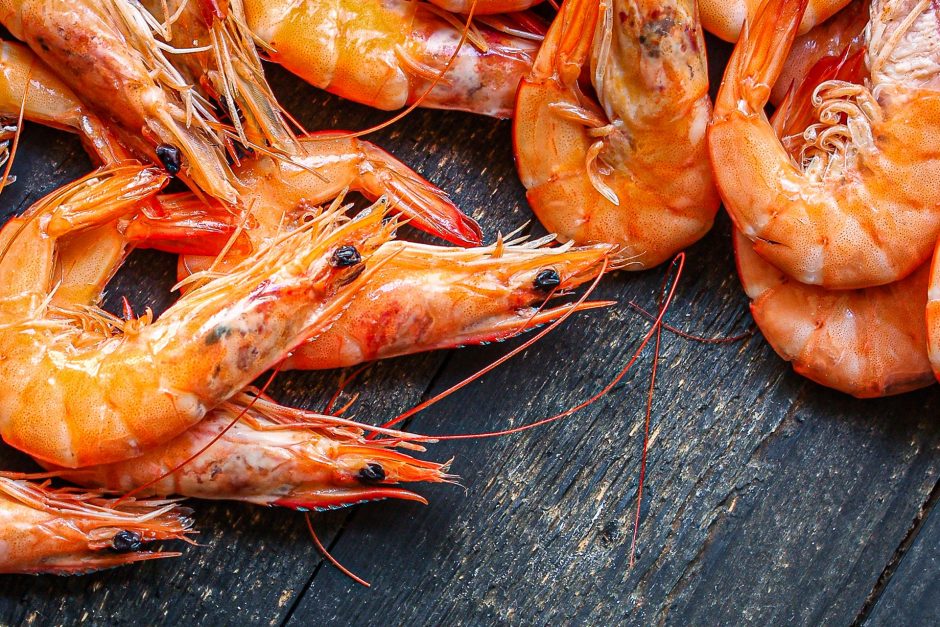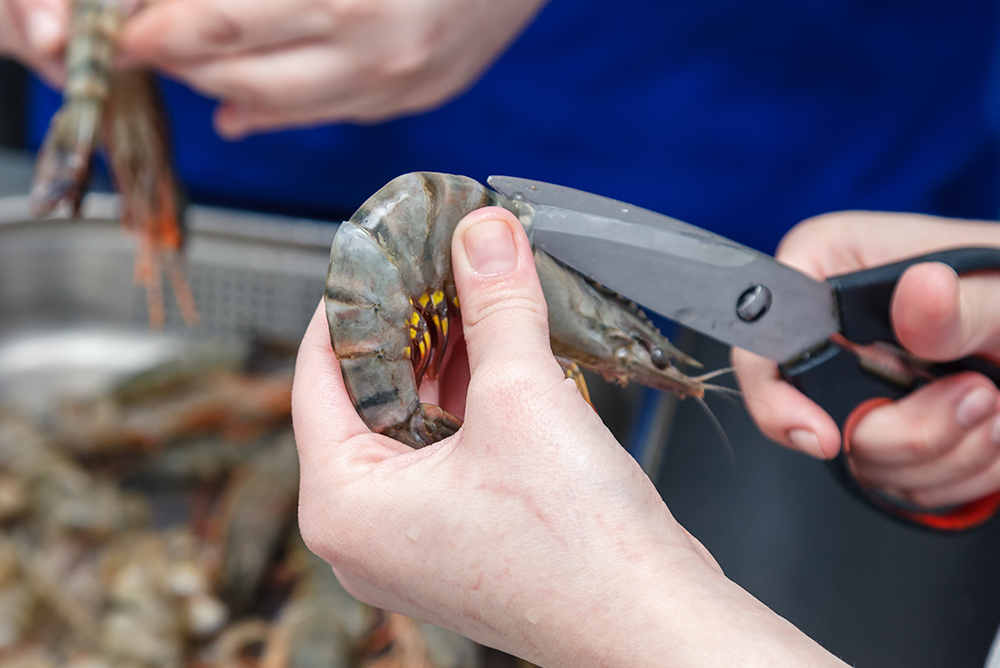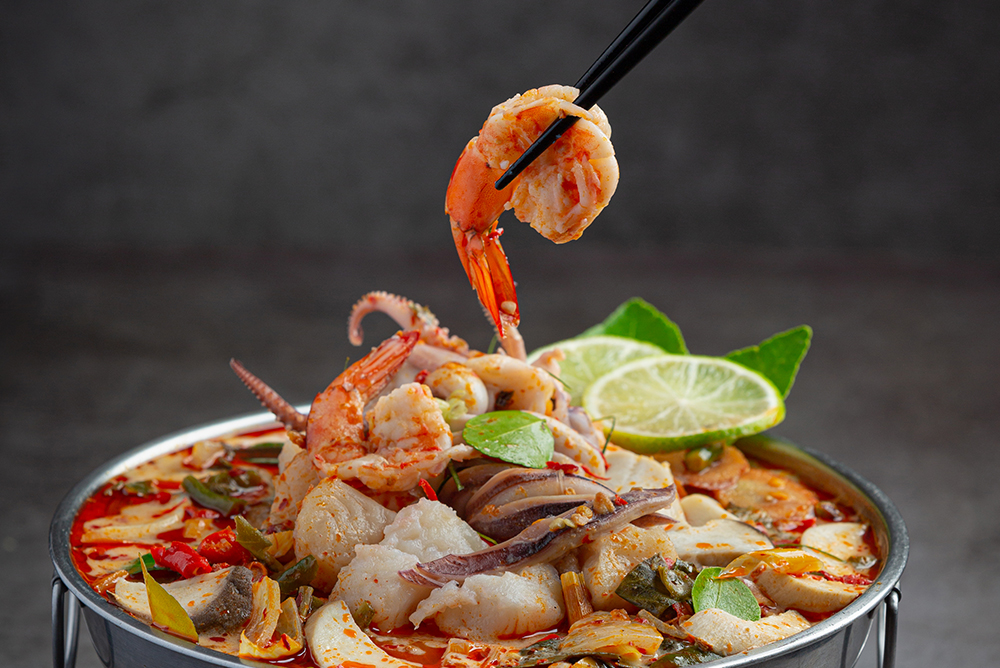Perk Up with 6 Tasteful Malaysian Drinks
Lighten your mood and rejuvenate your senses with 6 must-try Malaysian drinks!
Discover the authentic in Asian cuisine food

Prawns. The indescribable umami texture and succulent flavour that oozes satisfaction in every bite. A simple indulgence great as its own dish, a taste-booster in stir-fries and noodle soups, as well as a mouth-watering addition to your barbie. Surprisingly wholesome too – prawns contain more protein than other meats, carb-free, high in iron, omega 3 and omega 6 fatty acids. Swapping prawns for lamb, beef or chicken may even help you lose weight. 4-5 medium-sized prawns per meal is enough, so you might end up saving more in the long run when compared to eating meat. In Asian cuisines, prawns are probably the most common seafood besides fish and crab, savoured in luxuriant banquet dishes, popular street foods and unique household recipes.

Like all seafood, your prawns’ freshness is absolutely crucial for not just the flavour, but also to avoid food poisoning. Fresh prawn smells like the ocean and feels firm to the touch. Raw prawn colours may vary from dark to translucent, and light beige; while cooked prawns are generally vibrant red-orange. When buying raw prawns, be sure that they don’t look slimy, and without any smell of ammonia or iodine – two sure signs that they’ve gone bad. Black spots on the body or discolouration around the joints may also mean they’re less than optimal, though the flesh may be unaffected. Soft shell is fine, however, as the prawn could’ve just moulted before the catch.
Typically, prawns are frozen in ice immediately after fishing or harvest; and it’s vital that you keep them in your freezer as well. When shopping, best to get your prawns last, and hurry home to store them. Or, if you’re expecting a longer outing, bring an ice-box or an esky with ice. Keep your prawns wrapped and avoid direct contact with ice-water, as it will make them waterlogged.

To defrost, transfer them from your freezer to an airtight container, and keep in your regular fridge space overnight. Or, fill a large bowl/pot with cold water, and add salt – about 2 tbsp per litre – then, submerge the frozen prawns in it. They should thaw to a natural firmness in around 10mins. Drain the brine water and cook the prawns right away. Thawed prawns shouldn’t be refrozen as it will ruin their quality. Instead, keep your uncooked excess prawns in a sealed container, and store it in the colder area of your fridge. Never defrost your prawns openly at room temperature, which results in uneven thawing and may lure bacteria growth. Never microwave to thaw either, as this will partially cook your prawns, making them tough and bland. For boiling or simmering dishes like soups and curries, you can actually cook the prawns without thawing. Unlike meat cuts which trap the coldness inside the chunk of flesh and bones, prawns have less surface area, and the high cooking heat is enough to defrost, releasing their natural flavours.

Asian cuisines often cook prawns in shells, to lock in the juices and tastes. But peeling them makes it easier to enjoy. To clean, just twist off the head, gently remove the legs, the shell segments one by one; and then squeeze out the tail. Here’s a super easy video guide. Prawn heads and shells can be kept and boiled into an umami stock for soups like the iconic Penang prawn noodles. You can also peel the head and shells but keep the tail for a more shapely appearance for your dish.
Also optional is deveining or removing the prawn’s digestive tract which runs along its back. It’s entirely safe to enjoy cooked prawns without deveining. But if you prefer them completely cleaned – then peel them, straighten them, and lift out the veins with a knife. This deveined area is also the ideal spot to absorb your marinade mix or cooking sauce. A common Asian technique is to only cut open the prawn’s shell along its back while keeping the whole intact – for maximum natural flavour with enriched seasoning taste.

The best prawns you can find in Australia are local, fished from all along the coastline, and farmed primarily in the warm northern waters of Queensland. There are 4 main species, each with distinct looks, taste profile, and suitable for different dishes.
King Prawns are Australia’s favourite for their rich flavour and moist flesh. The Eastern King is found from Queensland to Victoria, the Western King from SA to Kimberly in WA, the Red Spot King off the coast of Queensland; while other areas have their local specialties, such as the Hay Point Kings, Spencer Gulf Kings and Mooloolaba Kings. Raw Kings have vibrant blue/purple tails, and turn rosy with luscious pink-orange bands when cooked. Savour them in a zesty, sumptuous Korean noodle soup, a simple, yummy stir-fry with wombok, or this magnificent Thai red curry special.
Tiger prawns are named for their distinctive dark stripes that turn into supple vermillion when cooked. In Australia, Brown Tiger Prawns and Grooved Tiger Prawns are fished, while Black Tiger Prawns are farmed. Both fished and farmed types are delicious, with the farmed Black Tiger Prawns cultivated through generations of breeding for a delectable flavour suited to Australian taste. Restaurants often have them on display for their striking looks. The medium-rich flavour and firm texture make them perfect for soups and marinated grills. Garlic especially boosts their flavour. Jazz up your barbie with a mouth-watering Thai skewer special; this tangy and savoury tomato stir-fry, or a spicy Malaysian noodle soup delight.
Banana Prawns are the most abundant in Australia, making up to ⅓ of all prawns in the market. The common type has red legs, while the White Banana Prawn has cream or yellow. When cooked, they look alluring as King and Tiger Prawns, yet are much more affordable. The sweet, mild taste is ideal for light dishes with delicate flavours. Enjoy them in an appetizing tempura treat, an award-winning somen special, and this umami sushi tray bake.
Lastly, found in the warm Northern Aussie waters are the Endeavour Prawns. Less known for their dull light beige colour, but their sweet, succulent flavour has amazed Australian fishers and tasters alike. Perfect for dishes with strong, bold flavours – the prawns’ supple taste blends well and stays distinctive with rich-flavoured herbs and spices. Indulge with a refreshing Vietnamese bowl, a flavoursome laksa stir-fry, or an exciting seafood Tom Yum soup.

Lighten your mood and rejuvenate your senses with 6 must-try Malaysian drinks!

Pair your hearty barbecues with these refreshing Asian delights!

What are the properties of ginger, and how to pick, store and use ginger in your cooking? Find out here!